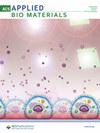Unmasking seasonal cycles in a high-input dairy herd in a hot environment: How climate shapes dynamics of milk yield, reproduction, and productive status
Abstract
This study aimed to predict the annual herd milk yield, lactation, and reproductive cycle stages in a high-input dairy herd in a zone with prolonged thermal stress. Also, the impact of climatic conditions on milk yield and productive and reproductive status was assessed. An autoregressive integrated moving average (ARIMA) model was used in data fitting to predict future monthly herd milk yield and reproductive status using data from 2014 to 2020. Based on the annual total milk output, the highest predicted percentage of milk yield based on the yearly milk production was in February (9.1%; 95% CI = 8.3–9.9) and the lowest in August (6.9%; 95% CI = 6.0–7.9). The predicted highest percentage of pregnant cows for 2021 was in May (61.8; 95% CI = 53.0–70.5) and the lowest for November (33.2%; 95% CI = 19.9–46.5). The monthly percentage of dry cows in this study showed a steady trend across years; the predicted highest percentage was in September (20.1%; CI = 16.4–23.7) and the lowest in March (7.5%; 4.0–11.0). The predicted days in milk (DIM) were lower in September (158; CI = 103–213) and highest in May (220; 95% CI = 181–259). Percentage of calvings was seasonal, with the predicted maximum percentage of calvings occurring in September (10.3%; CI = 8.0–12.5) and the minimum in April (3.2%; CI = 1.0–5.5). The highest predicted culling rate for the year ensuing the present data occurred in November (4.3%; 95% CI = 3.2–5.4) and the lowest in April (2.5%; 95% CI = 1.4–3.5). It was concluded that meteorological factors strongly influenced rhythms of monthly milk yield and reproductive status. Also, ARIMA models robustly estimated and forecasted productive and reproductive events in a dairy herd in a hot environment.

 求助内容:
求助内容: 应助结果提醒方式:
应助结果提醒方式:


